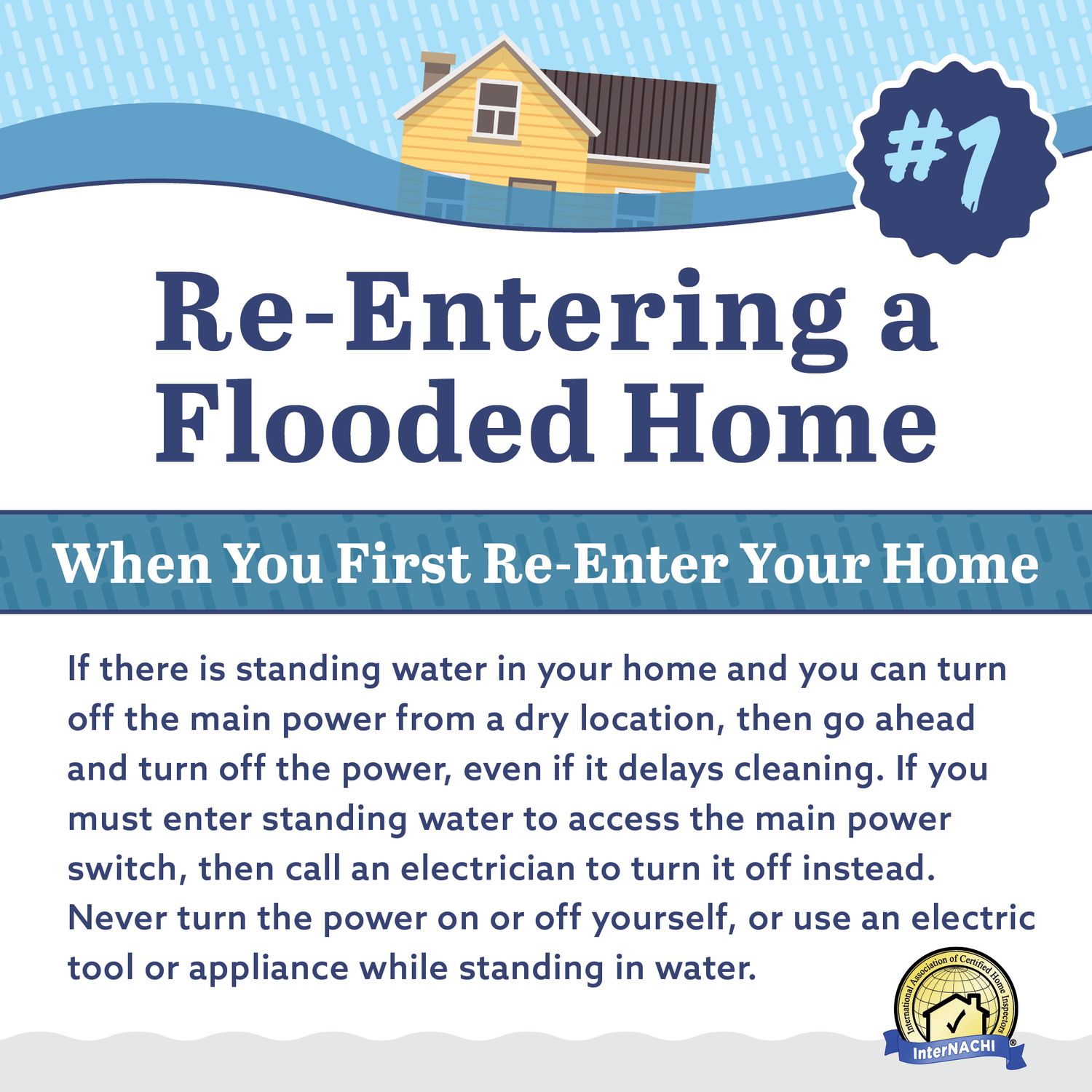Re-Entering A Flooded Home
Re-Entering a Flooded Home: A Guide for Homeowners and Inspectors
Natural disasters are unpredictable, but there are steps homeowners can take to reduce damage to their homes. When returning to a flooded home, be aware of the potential risks, such as mold or sewage contamination, which can lead to health issues. The following steps should be considered when re-entering a home after a natural disaster.
🏠 When You First Re-Enter Your Home
- Turn Off Power Safely:
If there is standing water and you can access the main power switch from a dry location, turn off the power. If you need to wade through water to reach the switch, call an electrician. Never turn the power on or off while standing in water, and avoid using electrical tools or appliances in wet areas. - Electrical System Check:
Have an electrician inspect your home's electrical system before turning the power back on. - Ventilate the Home:
If the home has been closed up for several days, briefly open the doors and windows to let the house air out for at least 30 minutes before staying inside for a longer period. - Assume Mold Contamination:
If your home has been flooded, it is likely contaminated with mold, so take appropriate precautions. - Sewage Contamination Risk:
If flood water or stormwater has entered the home, be aware that it may be contaminated with sewage.
💧 Drying Out Your House
Remove Standing Water:
- With Power On:
If it is safe, use a wet-dry shop vacuum, electric water-transfer pump, or sump pump to remove standing water. Always wear rubber boots while operating equipment in wet areas. - Without Power:
If you don’t have electricity or it’s unsafe to turn it on, use a portable generator to power the equipment. Important: Never operate gasoline-powered tools (like pumps or generators) indoors or in enclosed spaces, even if windows are open, due to the risk of carbon monoxide poisoning.
Use Fans and Dehumidifiers:
- Open doors and windows to aid drying. Place fans near windows or doors to blow air outward, preventing mold spores from spreading indoors.
🌬️ Continued Drying and Maintenance
- Check the HVAC System:
Have a professional clean your HVAC system, especially if it was flooded, to prevent spreading mold spores when it is turned on. - Prevent Future Water Entry:
Ensure that gutters and downspouts drain water away from your home, and make sure the ground around the house slopes away from it to keep the basement and crawlspace dry. - Crawlspace Drainage and Ventilation:
Ensure proper drainage in the crawlspace and ventilate it to help the area dry out.
⚠️ Be Cautious
Preparing for a natural disaster beforehand can help reduce damage and stress. However, re-entering a flooded home and drying it out can be dangerous. Always take precautions and follow these steps to re-enter safely. After a major storm or flood, have an InterNACHI® Certified Professional Inspector® assess the damage and offer appropriate recommendations.
🆓 To download: Simply right-click on each image and save it to your device.
🛒 Or, add the items to your cart, complete the free checkout process, and you'll receive them in PDF format.
